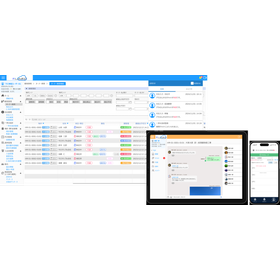It is possible to comprehensively grasp the flow of thunderclouds! Case study of the thunder and weather information provision system.
We would like to introduce a case where the lightning and weather information provision system "Lightning Scope Plus" was implemented at Japan Display Inc.'s Ishikawa Factory. Previously, we relied on lightning information that was publicly available for free on the websites of power companies and weather services to understand lightning conditions. However, the update intervals for this information were long, making it insufficient for precise decision-making. As a result, the person in charge had to supplement the lack of information based on their own experience and intuition, which created a high human burden and a situation with a high degree of dependency on specific individuals. Since the introduction of our product, it has become possible for almost anyone to make accurate judgments based on sufficient information. [Challenges Before Product Implementation] - The lightning information that was publicly available on websites had long update intervals, making it insufficient for precise decision-making. - The person in charge was supplementing the lack of information based on their own experience and intuition, leading to a high human burden. - There was a high degree of dependency on specific individuals, as only the person in charge could make judgments. *For more details, please refer to the PDF document or feel free to contact us.
Inquire About This Product
basic information
**Effects After Product Introduction** - Anyone can make accurate judgments (reduction of subjectivity) - Able to predict winter thunderstorms - Contributed to a reduction in self-generated power costs *For more details, please refer to the PDF document or feel free to contact us.*
Price range
Delivery Time
Applications/Examples of results
For more details, please refer to the PDF document or feel free to contact us.
catalog(2)
Download All CatalogsCompany information
Franklin Japan has been operating the Japan Lightning Detection Network (JLDN), the first and only nationwide lightning observation network in Japan, since October 1998. JLDN networks sensors installed across the country and utilizes accurate time information sent from GPS to observe the location, time, and current value of lightning strikes. The observation accuracy of JLDN boasts a capture rate of over 90% within its coverage area, with a location error of less than 500 meters, making it arguably the best lightning observation network in the world currently available. The observed lightning strike data is used in real-time for power management in factories, maintenance of networks, and protection of human life in outdoor sports.

![[Case Study] Japan Display Inc. Ishikawa Factory](https://image.www.ipros.com/public/catalog/image/01/9b0/463641/IPROS20969626187192925864.jpeg?w=120&h=170)


![[Case Study] Biwako Valley](https://image.www.ipros.com/public/product/image/877/2000443944/IPROS80180416293942281686.png?w=280&h=280)
![[Case Study] Mitsubishi Heavy Industries, Ltd. Nagoya Guidance and Propulsion Systems Manufacturing Division](https://image.www.ipros.com/public/product/image/268/2000444080/IPROS06318644685474667695.png?w=280&h=280)
![[Water-related IoT] Radio wave water level measurement system (radio wave water level gauge)](https://image.www.ipros.com/public/product/image/f60/2000623014/IPROS30283740768753479531.png?w=280&h=280)

![Cadmium concentration in rice - Simple measurement kit [for sale]](https://image.www.ipros.com/public/product/image/42a/2001516322/IPROS157372938992547760.png?w=280&h=280)


